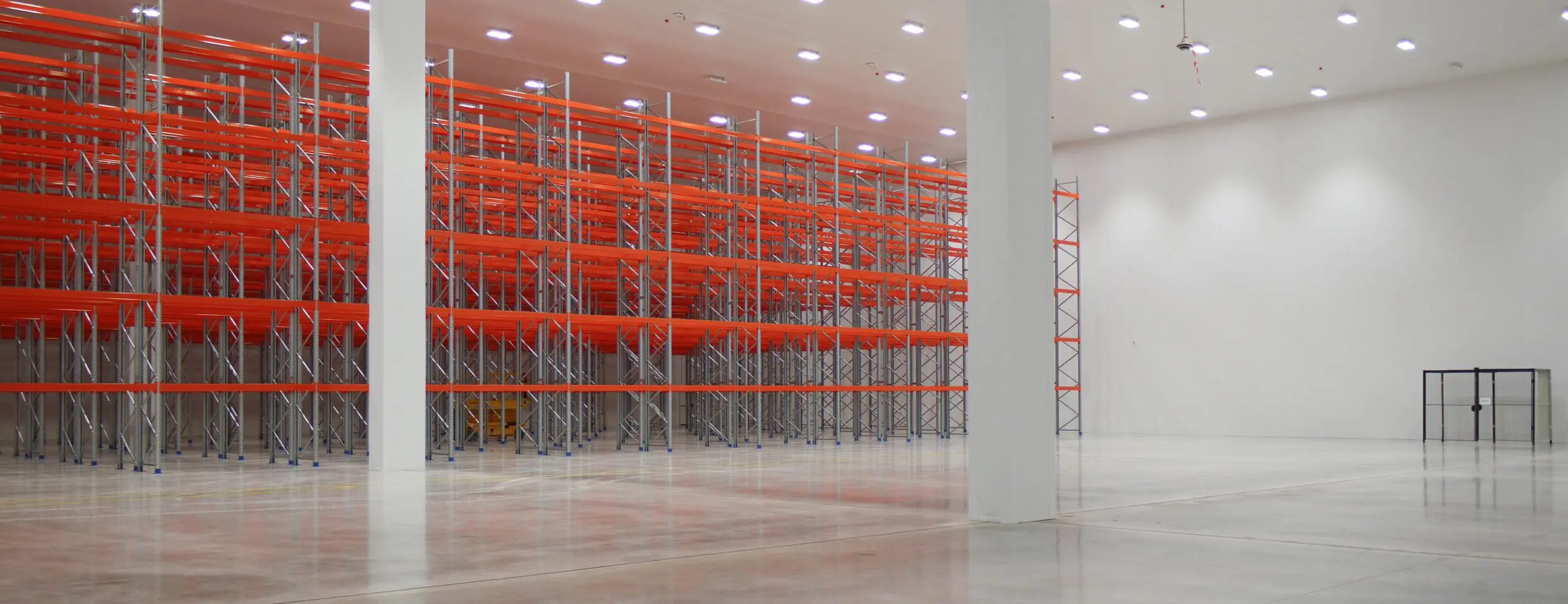Cold Room Flooring for Temperature Controlled Rooms
Choosing the right flooring system for your cold room isn’t as straightforward as it might seem. Different flooring types have varying performance characteristics – including heat transference and insulating properties – and are better suited to some types of cold room than others. Installing the wrong flooring type may impact the efficiency of your cold room, adding to your running costs and creating potential maintenance issues. How can you know which type of flooring is right for your needs? Read on to learn more about the main types of cold room floors.
1) Insulated Floor With Hexafloor Finish
This insulated flooring system is perfect for cold rooms and walk in freezers which see a lot of footfall, with racking units to hold boxes. If your cold room gets heavy pedestrian traffic, consider this option. In particular, this cold room flooring option works well in cold storage areas attached to food shops and supermarkets, cafes, pubs, bakeries and restaurants.
This type of floor is ideal for surfaces which are not level. It effectively smooths and flattens the surface, allowing you to build the cold room over it.
You can also choose hexafloor flooring for a small walk-in fridge or walk-in freezer room. Ideally, it should be placed in rooms which you are not going to wash using strong chemicals, as this can degrade the insulation and reduce performance.
2) Insulated Floor With Plywood & Overlay
Plywood overlaid insulated floors share a lot of characteristics with the hexafloor finish. Like that, it has the ability to flatten out a non-level surface, a useful option for constructing a brand new cold room. Again, it is best in areas that do not need regular chemical or jet washing – e.g. abattoirs and meat freezers, instead being swept or brushed to preserve the wooden outer lining.
You can use the plywood and overlay option for both small and large rooms; however, in larger rooms of 9m³ or more, additional support will be needed. This comes in the form of a 5 bar overlay or 2mm rigid galv, and can be added in the construction process.
Plywood and overlay floors are best for rooms which contain racking and pallets, and see a fair amount of footfall. Use them where you are storing meat, fruit and vegetables and similar produce.
3) Altro Floor
If you’re going to wash your cold room frequently with chemicals or detergents – at least once a week – then the previous options aren’t suitable. Instead, consider an altro floor. These floors are great in situations that demand high levels of cleanliness, water resistance and chemical resistance. They are frequently used in farms, dairies, abattoirs, and butchers’ shops, but are also useful for food storage and processing facilities.
One major benefit of altro flooring is its hygienic qualities. It is seamless, coving up the walls as well as the floor, without leaving gaps for bacteria to congregate and grow. This creates a smooth surface that is easy to keep clean, and stops hard-to-reach dirt traps from forming.
Altro floors are ideal if you are storing liquids, wet foods, and loose goods. They are one of the easiest flooring systems to keep clean; if hygiene is a priority, they should be high on your list of considerations.
4) Resin Floor
Like an altro floor, an epoxy resin floor works well if you will be washing your cool room regularly. It has the additional benefit of being able to integrate well with drainage systems. Use it if your room contains a water source, if you’re storing liquid produce, or if you will be inserting a drain inside the room.
A resin floor is an exceptionally robust option for cold room flooring. Once installed, a resin floor will provide years of durable use with very few maintenance requirements. This makes it ideal for rooms that see heavy footfall, trolley and vehicle traffic. At the same time, it has hygienic properties that means it will work well where cleanliness is a priority.
Resin floors are commonly used in butchers, growers, and test labs, where the combination of high pedestrian traffic and hygiene is key – but they are increasingly popular in kitchens, warehouses and food processing plants as well.
5) Granolithic Screed Floor
Most of the other options on this list work best when cold storage rooms normally only see pedestrian traffic. The granolithic screed floor, by contrast, can be used in rooms which require forklift or pallet truck access.
Install a granolithic screed floor in a large freezer or temperature-controlled warehouse where heavy product loads are stored. These sturdy floors are commonly found in the retail and pharmaceutical industries, as well as in units belonging to farmers and growers.
Next Steps
It’s not always easy to decide which flooring option will be the best for your particular business needs. Feel free to get in touch if you would like to know more, and to get advice about your cold room.


